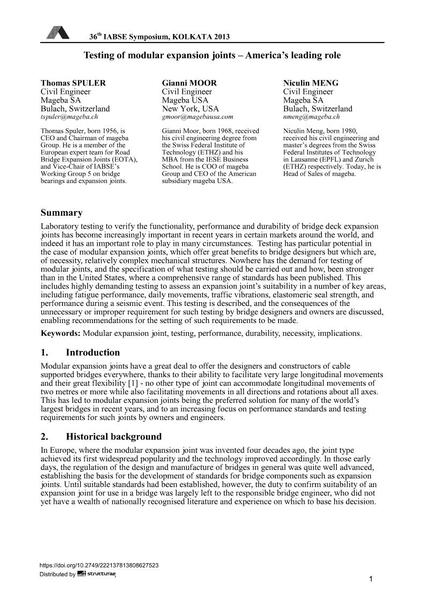Testing of modular expansion joints – America's leading role

|
|
|||||||||||
Détails bibliographiques
| Auteur(s): |
Thomas Spuler
Gianni Moor Niculin Meng |
||||
|---|---|---|---|---|---|
| Médium: | papier de conférence | ||||
| Langue(s): | anglais | ||||
| Conférence: | IABSE Symposium: Long Span Bridges and Roofs - Development, Design and Implementation, Kolkata, India, 24-27 September 2013 | ||||
| Publié dans: | IABSE Symposium Kolkata 2013 | ||||
|
|||||
| Page(s): | 1-7 | ||||
| Nombre total de pages (du PDF): | 7 | ||||
| Année: | 2013 | ||||
| DOI: | 10.2749/222137813808627523 | ||||
| Abstrait: |
Laboratory testing to verify the functionality, performance and durability of bridge deck expansion joints has become increasingly important in recent years in certain markets around the world, and indeed it has an important role to play in many circumstances. Testing has particular potential in the case of modular expansion joints, which offer great benefits to bridge designers but which are, of necessity, relatively complex mechanical structures. Nowhere has the demand for testing of modular joints, and the specification of what testing should be carried out and how, been stronger than in the United States, where a comprehensive range of standards has been published. This includes highly demanding testing to assess an expansion joint’s suitability in a number of key areas, including fatigue performance, daily movements, traffic vibrations, elastomeric seal strength, and performance during a seismic event. This testing is described, and the consequences of the unnecessary or improper requirement for such testing by bridge designers and owners are discussed, enabling recommendations for the setting of such requirements to be made. |
||||
